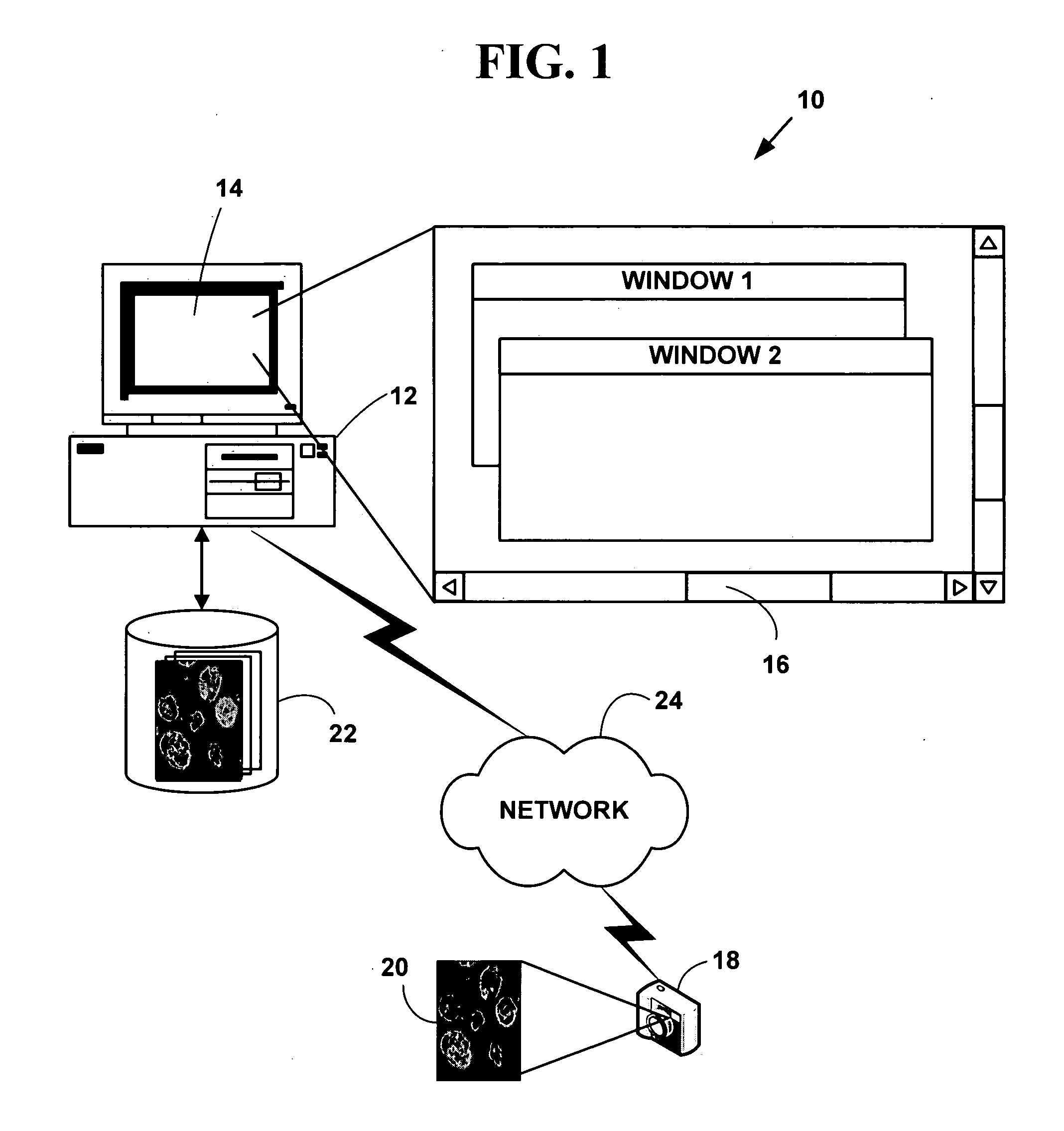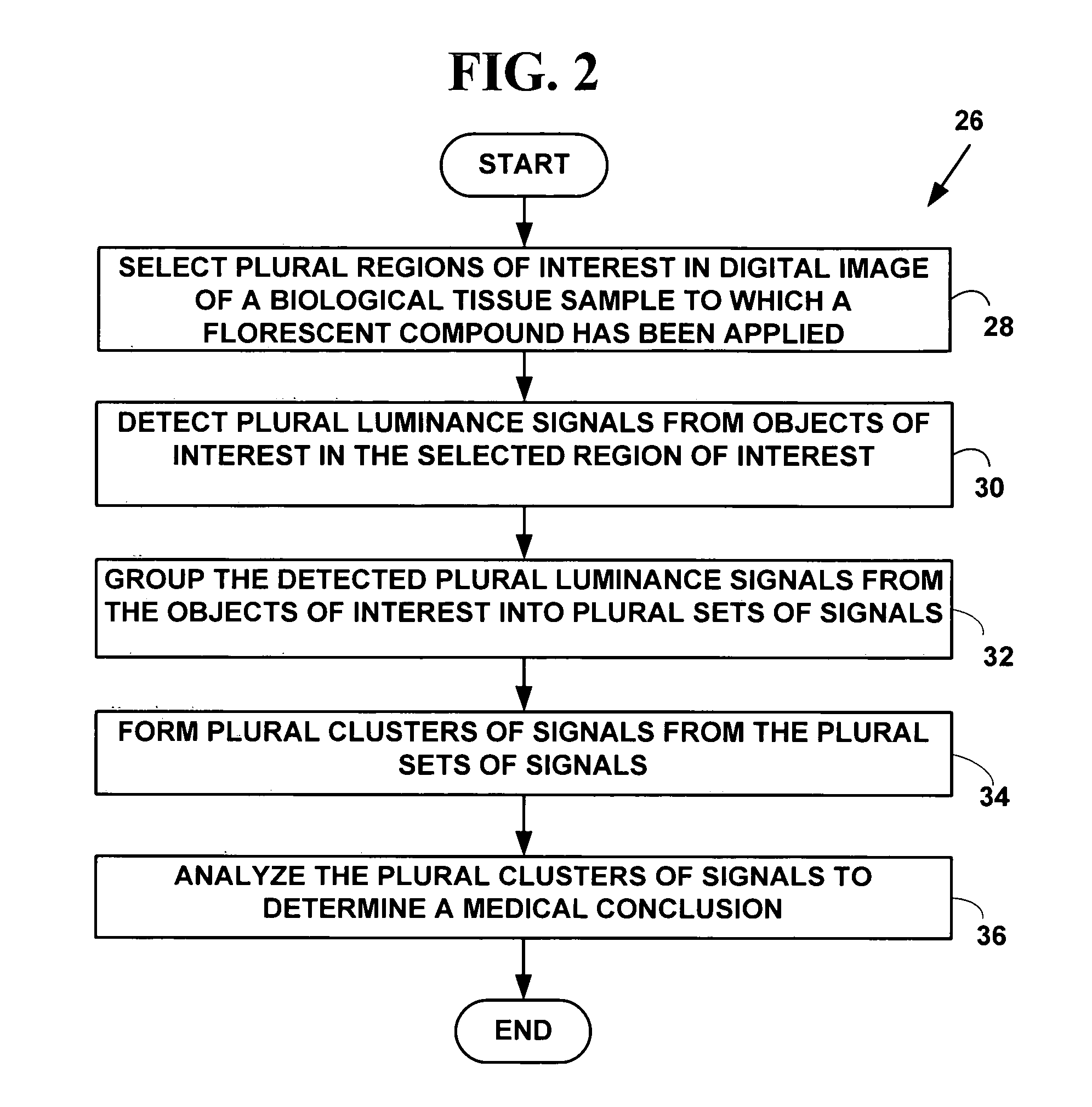Method and system for digital image based flourescent in situ hybridization (FISH) analysis
a technology of flourescent in situ hybridization and digital image, applied in the field of digital image processing, can solve the problems of not giving enough information for the referring medical clinician to make decisions about patient prognosis and treatment, the difficulty of simple task of counting cells of interest, and the possibility of missing genuine cells of interest by experienced pathologists
- Summary
- Abstract
- Description
- Claims
- Application Information
AI Technical Summary
Problems solved by technology
Method used
Image
Examples
Embodiment Construction
Exemplary Fluorescence In Situ Hybridization (FISH) Analysis System
[0050]FIG. 1 is a block diagram illustrating an exemplary automated fluorescence in situ hybridization (FISH) analysis system 10. The exemplary system 10 includes one or more computers 12 with a display 14 (one of which is illustrated). The display 14 presents a windowed graphical user interface (“GUI”) 16 with multiple windows to a user. The system 10 may optionally include an optical or fluorescent microscope or other magnifying device (not illustrated in FIG. 1).
[0051] As is known in the art, a conventional “optical microscope” uses light to illuminate a sample and produces a magnified image of the sample. A “fluorescence microscope” uses a much higher intensity light to illuminate the sample. This light excites fluorescent compounds in the sample, which then emit light of a longer wavelength. A fluorescent microscope also produces a magnified image of the sample, but the image is based on the second light sourc...
PUM
 Login to View More
Login to View More Abstract
Description
Claims
Application Information
 Login to View More
Login to View More - R&D
- Intellectual Property
- Life Sciences
- Materials
- Tech Scout
- Unparalleled Data Quality
- Higher Quality Content
- 60% Fewer Hallucinations
Browse by: Latest US Patents, China's latest patents, Technical Efficacy Thesaurus, Application Domain, Technology Topic, Popular Technical Reports.
© 2025 PatSnap. All rights reserved.Legal|Privacy policy|Modern Slavery Act Transparency Statement|Sitemap|About US| Contact US: help@patsnap.com



